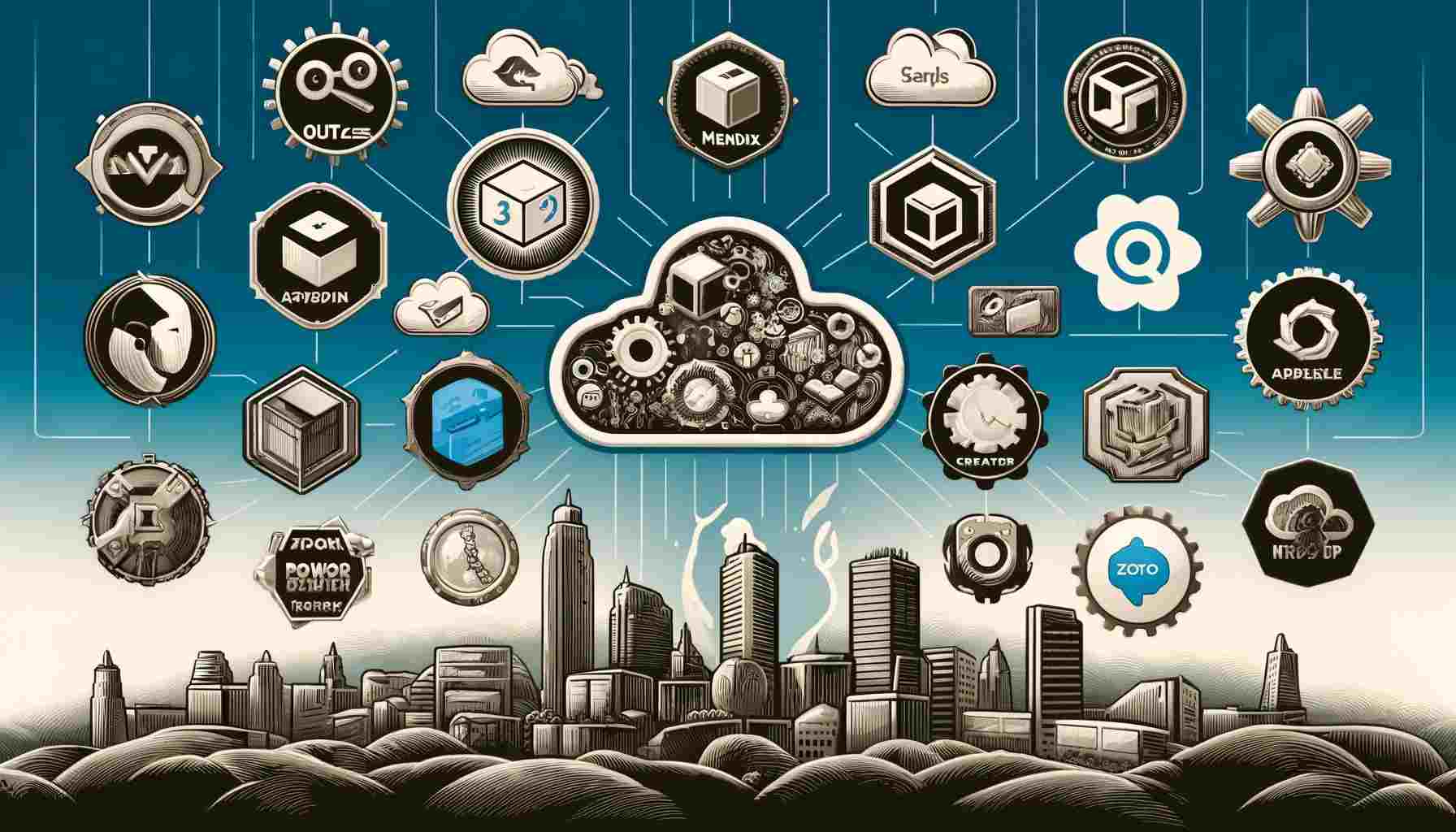Last updated on May 26th, 2024 at 12:27 pm
In the rapidly evolving software development landscape, low code app development platforms have emerged as a transformative force. These platforms enable developers and non-developers alike to build applications quickly and with fewer lines of code, democratizing app development and accelerating digital transformation. As we move into 2024, several key players dominate the market, each offering unique features and benefits. This article provides a comparative analysis of the top low code platforms for app development in 2024, helping you choose the right tool for your needs.
1. OutSystems
OutSystems is a robust low code platform known for its ability to support complex, enterprise-grade applications. It offers a wide range of functionalities including full-stack app development, real-time performance monitoring, and powerful integration capabilities. OutSystems is particularly favored by enterprises for its high scalability and strong security measures, which include built-in protection against common cybersecurity threats.
- Strengths: High scalability, strong security features, extensive integration capabilities.
- Weaknesses: Higher learning curve, more expensive compared to other options.
2. Mendix
Mendix is another leading platform in the low code market, known for its all-inclusive development environment. It supports various development needs from mobile and web apps to IoT applications. Mendix’s standout feature is its collaboration capabilities, allowing business and IT teams to co-develop applications seamlessly. The platform also integrates well with existing systems, a crucial factor for large organizations.
- Strengths: Excellent collaboration tools, broad integration options, suitable for various applications.
- Weaknesses: It can be complex for absolute beginners and has a relatively high cost.
3. Microsoft Power Apps
Part of the Microsoft Power Platform, Power Apps is designed to make app development accessible to everyone within an organization. Its drag-and-drop user interface and pre-built templates allow rapid app deployment. Power Apps is deeply integrated with other Microsoft services, making it a compelling choice for organizations already invested in the Microsoft ecosystem.
- Strengths: User-friendly interface, strong integration with Microsoft products, cost-effective for existing Microsoft users.
- Weaknesses: Less flexible for complex applications, dependent on other Microsoft products.
4. Appian
Appian provides a software development platform that combines low code with business process management (BPM). This integration allows developers to create apps that perform well and align closely with business workflows. Appian is particularly noted for its design interface, which promotes rapid prototyping and iterative development.
- Strengths: Strong BPM features, good for regulatory compliance, intuitive design interface.
- Weaknesses: Less suited for purely mobile-focused applications, can be expensive.
5. Zoho Creator
Zoho Creator is an ideal low code platform for SMBs and enterprises looking for cost-effective app development. It offers easy-to-use tools for building web and mobile apps and has a host of ready-to-use templates and components. Zoho Creator integrates smoothly with other Zoho products and many external services, enhancing its utility.
- Strengths: Cost-effective, user-friendly, and integrates well with the Zoho ecosystem.
- Weaknesses: Limited functionality for very complex projects, performance can vary.
6. Salesforce Lightning
Salesforce Lightning is a component-based framework for app development within the Salesforce ecosystem. It’s designed to make processes like app customization and Salesforce integration simpler. While primarily used by existing Salesforce customers, Lightning has expanded its appeal with features like the App Builder and Component Library.
- Strengths: Deep integration with Salesforce, intuitive app builder interface.
- Weaknesses: Primarily beneficial for Salesforce users, limited outside the Salesforce ecosystem.
7. Pega Platform
Pega Platform is known for its client-centric approach to app development, emphasizing customer engagement and operational efficiency. It combines low code app development with intelligent automation and real-time AI capabilities, making it a powerful tool for businesses focusing on customer service and automation.
- Strengths: Strong AI integration, excellent for customer engagement applications.
- Weaknesses: Steeper learning curve, higher cost.
Comparative Analysis
When comparing these platforms, several factors should be considered:
- Ease of Use: Platforms like Microsoft Power Apps and Zoho Creator score high on user-friendliness, while platforms like OutSystems and Pega offer more advanced features at the cost of a steeper learning curve.
- Integration Capabilities: This is crucial for enterprises connecting their apps with existing systems. OutSystems and Mendix lead in this area.
- Scalability: Essential for growing businesses. OutSystems and Salesforce Lightning offer great scalability.
- Cost: Budget constraints can influence the choice. Zoho Creator and Microsoft Power Apps are more budget-friendly, especially for smaller businesses or those already using related products.
Conclusion
Choosing the right low code platform in 2024 depends on your needs—ease of use, scalability, cost, or integration capabilities. OutSystems and Mendix are top choices for complex enterprise applications. For those embedded in the Microsoft ecosystem, Power Apps provides a seamless experience. SMBs may find Zoho Creator to be the most cost-effective and user-friendly option.
By understanding each platform’s unique offerings, businesses can leverage low code app development to speed up their development cycles and enhance operational efficiency and innovation capacity.



